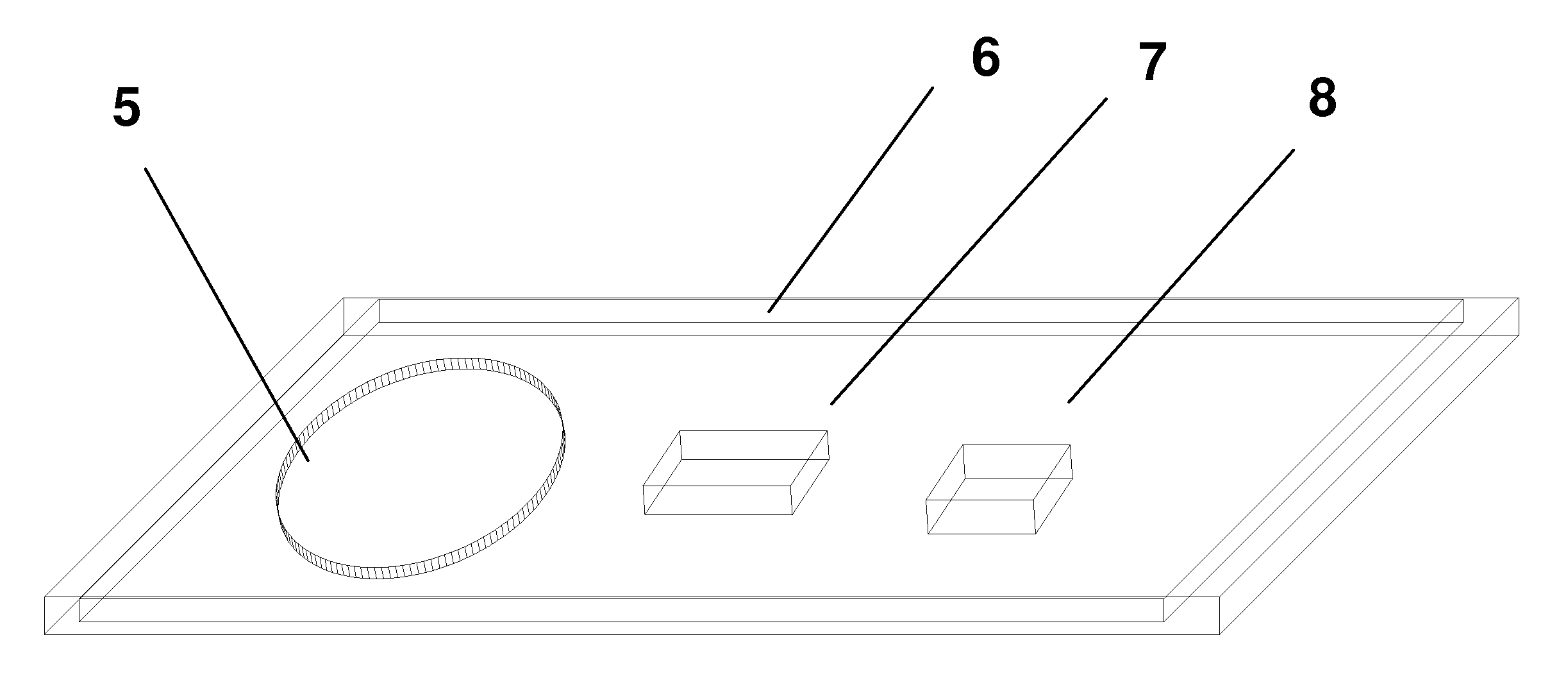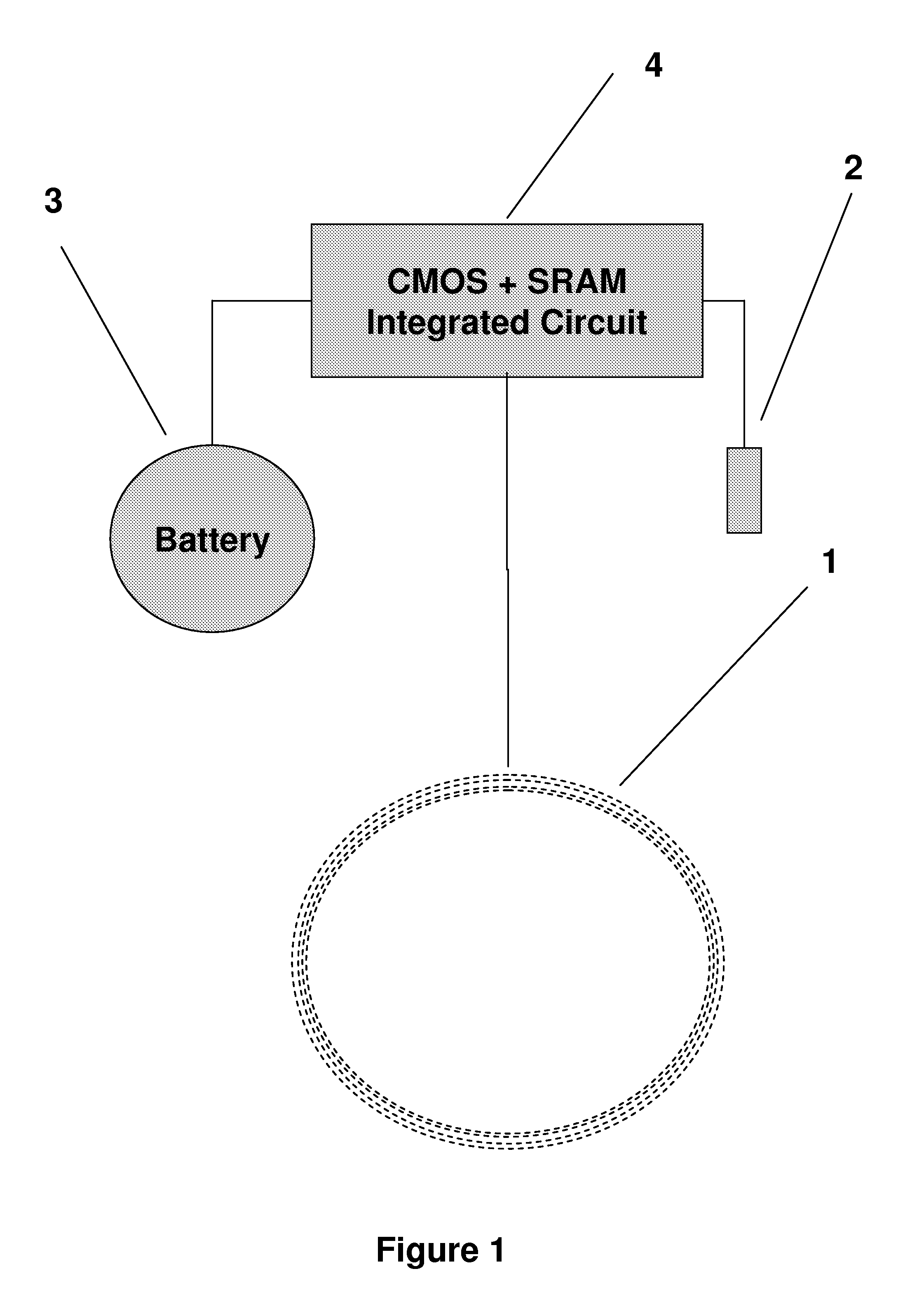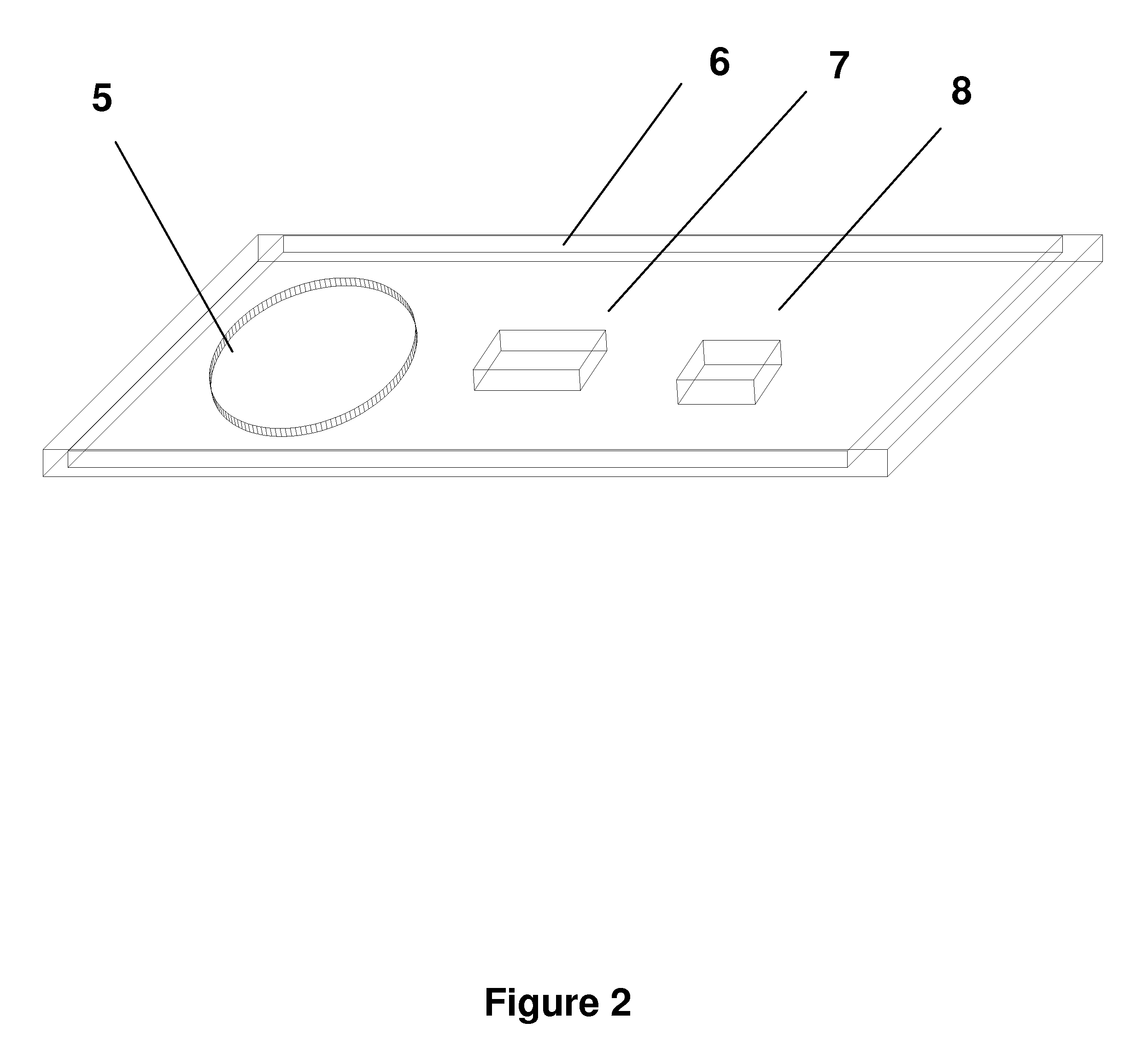Low-frequency radio tag encapsulating system
a low-frequency radio and tag technology, applied in the direction of mechanical actuation of burglar alarms, instruments, and semiconductor/solid-state device details, etc., can solve the problems of low-frequency tags that are slow, too costly, and short-range, and can only be used in small-scale applications, etc., to achieve the effect of avoiding the formation of special new problems, and reducing the cost of low-frequency tags
- Summary
- Abstract
- Description
- Claims
- Application Information
AI Technical Summary
Benefits of technology
Problems solved by technology
Method used
Image
Examples
example # 1
EXAMPLE #1.
[0076]FIG. 15 shows a sturdy tag 36 according to the invention, placed on a two-inch granite slab 38, ready to be struck with a sledge hammer 37. The assignee was recently challenged by a well known RF-ID consultant regarding the tag packaging according to the invention. The consultant wondered whether the demonstration shown in FIG. 15 was contrived. The consultant wondered whether the assignee did not hit the tag very hard. Thus, the consultant bet the assignee that the assignee could not drive a nail into a piece of wood by hitting the tag 36 with a hammer. The terms of the bet were finalized—US $20.00 per nail, but limited to a total of three nails.
[0077]FIG. 16 shows a sturdy tag 36 according to the invention, nearby to a block of wood 40 with a small hole 41 in it, to be used for driving three nails42. The bet called for the use of the tag 36 and a hammer to pound three nails 42 into a wood block 39. A hard wood block 40 with a small hole 41 was placed over each na...
example # 2
EXAMPLE #2.
[0081]FIG. 22 shows a tongue 47 of a forklift (omitted for clarity in FIG. 22) positioned over a sturdy tag 36 according to the invention, in preparation for a test of the tag 36. The consultant proposed a new test, colloquially called the “Fork Lift Bash” or FLB. The tag 36 was placed under the tongue (fork) of a one-ton forklift. The end of the tongue is used to bash the tag 36 repeatedly. FIG. 23 shows the forklift 45 pushing down upon the tag 36 with enough force to lift both front wheels 46 of the forklift 45. This was repeated several times while the received signal from the tag 36 was monitored.
[0082]FIG. 24 plots tag reads with correct CRCs during the pressing or “bashing” activity of FIG. 23. The reads are plotted over time (horizontal axis) with the vertical axis showing received signal strength. The drops 48 in signal strength were due to detuning of the antenna because of the close contact to the steel in the tongue. Green dots in FIG. 24 represent reads that...
PUM
 Login to View More
Login to View More Abstract
Description
Claims
Application Information
 Login to View More
Login to View More - R&D
- Intellectual Property
- Life Sciences
- Materials
- Tech Scout
- Unparalleled Data Quality
- Higher Quality Content
- 60% Fewer Hallucinations
Browse by: Latest US Patents, China's latest patents, Technical Efficacy Thesaurus, Application Domain, Technology Topic, Popular Technical Reports.
© 2025 PatSnap. All rights reserved.Legal|Privacy policy|Modern Slavery Act Transparency Statement|Sitemap|About US| Contact US: help@patsnap.com



